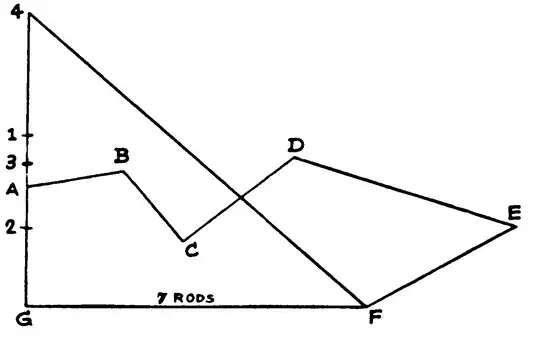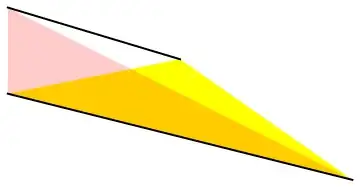I saw this problem in a puzzle book. Just wondering if anyone can explain the principle behind this method.
A rectilinear figure of any number of sides can be reduced to a triangle of equal area, and as $\angle AGF$ happens to be a right-angle the thing is quite easy in this way:
Continue the line $GA$.
Now lay a parallel ruler from $A$ to $C$, run it up to $B$ and mark the point $1$.
Then lay the ruler from $1$ to $D$ and run it down to $C$, marking point $2$.
Then lay it from $2$ to $E$, run it up to $D$ and mark point $3$.
Then lay it from $3$ to $F$, run it up to $E$ and mark point $4$.
If you now draw the line $4$ to $F$ then $\triangle G4F$ is equal in area to the irregular field.
As our scale map shows $GF$ to be $7$ inches (rods), and we find the length $G4$ in this case to be exactly $6$ inches (rods), we know that the area of the field is $\frac 12 (7\times 6)$ or $21$ square rods.
The simple and valuable rule I have shown should be known by everybody-but is not

